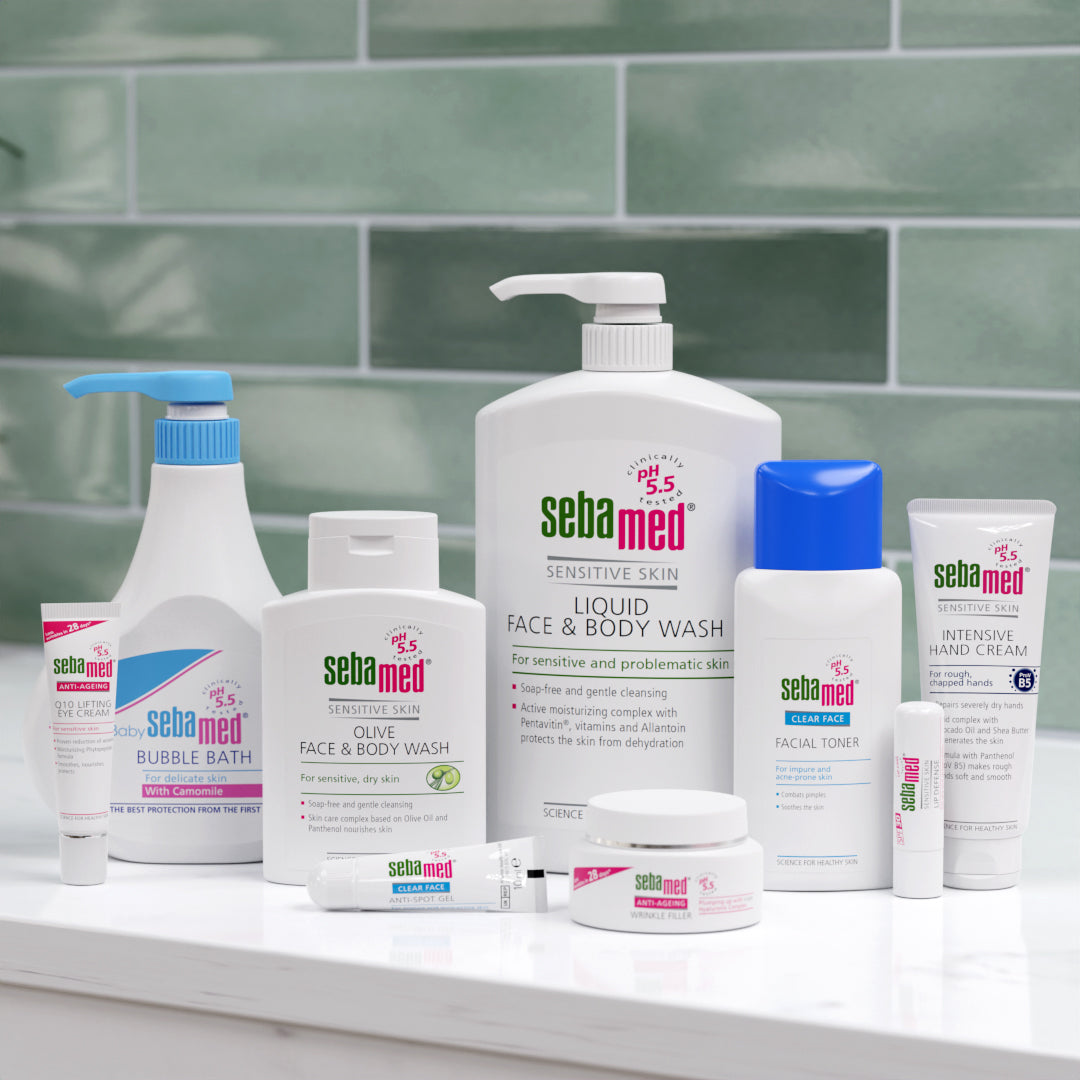The three core hormones that can change the appearance and feel of the skin are; oestrogen, progesterone and testosterone. Each of these hormones plays a different role in your skin condition.
Oestrogen
Oestrogen keeps the skin plump and firm by stimulating the natural production of collagen, elastin and hyaluronic acid.
Progesterone
This revitalising hormone assists in the secretion of thyroid hormones, which ensures that the skin is receiving the necessary nutrients, blood and oxygen to glow. Progesterone also has protective properties that prevent the skin from becoming damaged by stress and can compress the look of pores.
Testosterone
It is often misunderstood that testosterone only affects men, however, this hormone can be found in everyone. Testosterone stimulates the sebaceous glands which produce sebum (natural oils) for your skin.
It’s not just hormone changes from menstruation that affect the skin, but any state that creates fluctuations in your hormones, such as pregnancy or menopause, can have an impact. By knowing how that will have an impact, you can adapt your skincare accordingly.
Hormones During Menstruation
We all know that the skin’s appearance changes during the menstrual cycle, but depending on where you are in your cycle depends on which are the dominant hormones.
Day 1-6
Throughout days 1-6 of the cycle oestrogen, progesterone and testosterone levels are all at a low. Because of this, the skin may be drier and duller as well as more sensitive. Making sure that you’re taking steps to keep your skin hydrated can keep your skin feeling refreshed. This can include drinking more water and opting for a more hydrating moisturiser, such as the sebamed Moisturising Lotion. Additionally, avoiding using new products and waxing can prevent any further irritation.
Day 7-16
In the next phase (days 7-16), oestrogen production is increased and reaches its peak by day 12, allowing a healthy cell turnover. Use a gentle exfoliant, such as the sebamed Clear Face Gentle Scrub to remove dead cells and reveal the fresh glow underneath, but don’t overdo it with products.
Day 17-24
During days 17-24, oestrogen levels will drop and progesterone will reach its peak. This can increase oil build-up and the chance for breakouts. Using gentle pore-deep cleansers, such as the sebamed clear face antibacterial cleansing foam can help to manage excess sebum production.
Day 24+
Finally, in the phase right before your period, testosterone becomes dominant leading to the period breakout that we are all familiar with. Using anti-bacterial cleanser and spot treatments can help to manage these breakouts.
Hormones During Pregnancy
During pregnancy, oestrogen and progesterone production is increased, which creates the “pregnancy glow”. However, this combination can cause your pores to secrete excess oil, which can also contribute to the appearance of chloasma. This common skin condition presents darker patches of skin particularly on the face and sun-exposed areas.
Hormones During Menopause
One of the key hormone changes during menopause is the decrease in oestrogen levels, which directly impacts the production of collagen. It has been identified that people who experience menopause will lose roughly 30% of natural collagen during the first 5 years.
The fine lines and dryness caused by a lack of collagen can be supported by targeted, anti-ageing skincare that is appropriate for mature skin. Additionally, avoiding long hot showers can prevent further skin dryness.
Your skin is constantly changing, as are your hormone levels. So although every day may not be a good skin day, by understanding your regular hormone routines you can continue to meet your skin goals.






